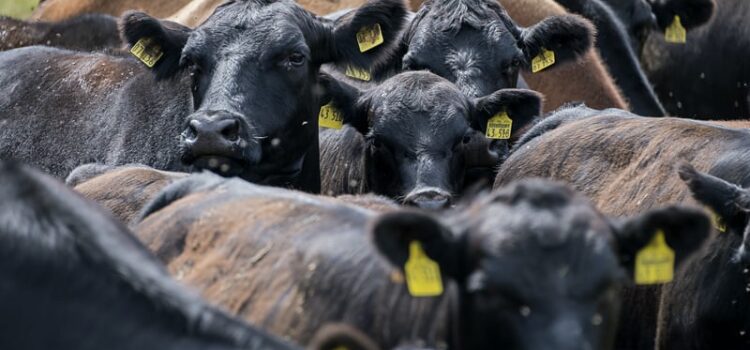

This article is an excerpt from the Shortform book guide to "Fast Food Nation" by Eric Schlosser. Shortform has the world's best summaries and analyses of books you should be reading.
Like this article? Sign up for a free trial here .
What are the biggest meat industry problems? Why do these problems happen?
Some of the biggest meat industry problems are with the working conditions in slaughterhouses. These workers deal with constant unsafe and unsanitary conditions.
Read more about meat industry problems below.
Meat Industry Problems in the Slaughterhouse
In the last chapter, we examined how cattle ranchers are exploited by the demands of the fast food giants and the major meatpackers. In this chapter, we’ll explore how workers (and animals) inside those meatpacking facilities are similarly harmed by the inhumane system of food production that fast food has wrought.
Meatpacking, once a heavily unionized, high-skill, and well-paying profession, has been transformed into a dangerous and low-paying job performed by some of the most vulnerable and easily exploited members of American society.
The IBP Revolution
Modern American meatpacking got its start with a man named Warren Montfort. Montfort realized that there were major advantages to feeding cattle grain instead of grass (which had been the standard up to that point)—the meat was fattier and more tender and could be eaten within days after slaughter. On top of that, New Deal-era agricultural subsidies made grain an inexpensive food for livestock. He became a major figure in the cattle-feeding industry. In 1960, he decided to go into the slaughtering business, opening a small slaughterhouse in the town of Greeley, Colorado. At this time, these were still high-paying union jobs. But major changes were just around the corner.
That same year, a new company named IBP came onto the scene. They believed that they could succeed as an upstart by taking a radical approach to cutting costs. Their production system was designed, like that of McDonald’s, to eliminate the need for skilled workers. Rather than using skilled butchers, IBP used an assembly line model, with each worker performing the same repetitive tasks and making the same cuts and stabs to the cattle carcasses that came past them during the course of an eight-hour shift. By mass-producing specialty cuts and shipping them in sealed plastic to the supermarkets, this method of production also enabled the supermarkets to fire most of their skilled butchers.
The by-now-familiar wave of consolidations followed, driven by the market’s new demands for standardized, uniform products. In such an environment, small meatpackers had to face the prospect of either selling themselves to the major players or risk going out of business. They simply could not compete with the scale of production that the giants had. This led to the creation of mega-firms like ConAgra, the largest meatpacking company in the world and the largest food-service supplier in all of North America. This concentration of the industry was actively supported by the Reagan justice department through its non-enforcement of antitrust law.
Meat Industry Problems and Death of the Unions
IBP also declared war on the meatpacking unions, which is another one of the meat industry problems. They made a point of locating their plants in rural states, outside the urban centers where labor organization was strongest—before this, major cities like Chicago were the nerve centers of the meatpacking industry. The company developed a reputation of having a zero-tolerance policy toward unions, which eventually spread throughout the whole industry. In the early 1970s, they even enlisted the help of organized crime figures to break up a strike that was preventing their beef from being sold in New York City.
The low-skill, low-wage mode of production destroyed the old urban meatpacking districts, as companies flocked west to open new plants in low-tax, anti-union states like Kansas, Texas, Colorado, and Nebraska. Workers at these new-style plants earned less than half of what their union counterparts in Chicago had just a few years before.
These anti-labor policies spread from IBP to other major players in the industry, including at the Montfort plant. When Montfort workers at a slaughterhouse in Colorado went on strike in 1979, the company played hardball: they shut down the facility and fired all the workers, rather than negotiate with the strikers. They opened a new slaughterhouse and refused to hire any of the former workers. It was a statement of unbridled hostility toward labor.
Today, the major meatpackers have gained the decisive upper hand over the greatly weakened unions. Although meatpacking companies do offer basic benefits like health insurance after six months of employment, the (deliberately) high turnover rate prevents most employees from ever being able to take advantage of them. Critically, high turnover makes the workforce easy to control, as no one lasts long enough to emerge as a potential organizer or troublemaker for the company. This severely undermines worker solidarity, making it extremely difficult to launch a union drive inside a plant today.
Exploiting the Undocumented
Exploitation is another one of the serious meat industry problems. Having largely busted the once-powerful labor unions, firms like IBP and Montfort have turned to a new source of cheap, unskilled labor: undocumented immigrants from Mexico, Central America, and Southeast Asia. These workers earn barely above subsistence level and live in impoverished shantytowns within sight of the slaughterhouses.
IBP led the charge in recruiting recent immigrants to become the new face of America’s meatpacking workforce. They aggressively recruit in poor neighborhoods, as well as at homeless shelters.
(Shortform note: IBP was acquired by Tyson in 2001, around the time of the publication of Fast Food Nation. Tyson still uses the IBP brand name for beef and pork products, so we will continue to refer to the firm as “IBP” for the purposes of this summary.)
IBP even maintains an employment office in Mexico City and offers bus transportation that takes workers directly from their towns and villages in rural Mexico to the meatpacking heartland of the American West. The federal government estimates that about one-quarter of them are undocumented and are not authorized to work in the US.
Extorting State and Local Governments and Endangering Communities
The companies have been all-too-eager to use public services in order to offload the costs of their exploitative, low-wage labor practices. In one egregious example, a major meatpacker simply chartered a bus to drop its newly hired workers off at a homeless shelter in Minnesota, which agreed to take them. This arrangement amounted to a public subsidy of a private corporation, as it allowed the company to pay low wages without having to worry about how its workers were going to afford housing.
The industry also knows how to coerce subsidies and tax cuts out of state and local governments by threatening to leave if their demands aren’t met. The industry will claim that it needs these public favors in order to be able to create jobs. In 1987, ConAgra demanded a list of expensive fiscal concessions from the state of Nebraska and threatened to pull out of the state if the governor didn’t comply. The state promptly granted the concessions, only to see the company leave Nebraska anyway a mere decade later, after the tax provisions expired.
The major meatpackers aren’t just hurting their workers—they are laying waste to the quality of life in the communities where they operate. The animal excrement created as a by-product of the slaughterhouses is dumped in giant, open-air waste pits called “lagoons.” The hydrogen sulfide of the lagoons causes the air to reek of rotten eggs and can lead to respiratory problems, headaches, and even nerve damage for those who are exposed to it over long periods of time.

———End of Preview———
Like what you just read? Read the rest of the world's best book summary and analysis of Eric Schlosser's "Fast Food Nation" at Shortform .
Here's what you'll find in our full Fast Food Nation summary :
- How the fast food industry reshaped the American economy
- How fast food marketing is manipulating you
- Why the rise of fast food has destroyed family farms across America






